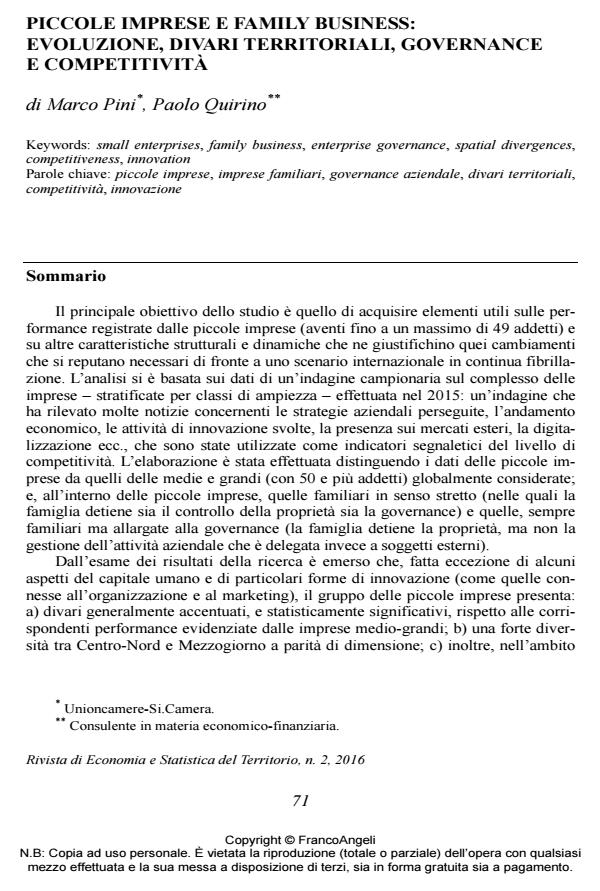Small enterprises and family business: evolution, territorial differences and competitiveness
Journal title RIVISTA DI ECONOMIA E STATISTICA DEL TERRITORIO
Author/s Marco Pini, Paolo Quirino
Publishing Year 2016 Issue 2016/2
Language Italian Pages 30 P. 71-100 File size 384 KB
DOI 10.3280/REST2016-002003
DOI is like a bar code for intellectual property: to have more infomation
click here
Below, you can see the article first page
If you want to buy this article in PDF format, you can do it, following the instructions to buy download credits

FrancoAngeli is member of Publishers International Linking Association, Inc (PILA), a not-for-profit association which run the CrossRef service enabling links to and from online scholarly content.
This work aims to analyze the differences in competitiveness on the one hand between small and medium-big enterprises, even at territorial level, and on the other hand, focusing on small family businesses (SFBs), between SFBs where the family controls both ownership and governance (named "SFBs in strict sense") and SFBs where the governance runs by outside managers (named "SFBs broadened to governance").
Keywords: Small enterprises, family business, enterprise governance, spatial divergences, competitiveness, innovation
Jel codes: D22, G32, L25.
Marco Pini, Paolo Quirino, Piccole imprese e family business: evoluzione, divari territoriali, governance e competitività in "RIVISTA DI ECONOMIA E STATISTICA DEL TERRITORIO" 2/2016, pp 71-100, DOI: 10.3280/REST2016-002003